Three years ago, foreign investors in Argentina could hardly believe their luck.
Within weeks of taking office in December 2015, President Mauricio Macri rapidly dismantled much of the interventionist policies that had made the country a pariah in global financial markets for the previous decade.
Gone were capital controls and tight restrictions on imports and access to foreign currency. The former businessman and mayor of Buenos Aires even reached an agreement with the holdouts from the country’s 2002 default on US$132 billion of public debt.
Argentina was open for business again, and multinationals flocked back, especially mining companies. When Macri’s Mining Secretary Daniel Meilan spoke at the Prospectors & Developers Association of Canada convention in Toronto in March 2016, eager investors jostled to hear him.
It’s easy to understand why. The country’s mineral potential is immense, combining the copper-rich Andes, the northwest’s lithium-bearing salares, and the gold and silver beds of Patagonia.
A report published earlier this year by the Argentine Chamber of Mines detailed a pipeline of mine projects worth almost US$29 billion.
Some of them are huge. Glencore’s (LSE: GLEN) Pachon deposit, a giant porphyry located just a few kilometres from Antofagasta’s (LSE: ANTO) Los Pelambres mine in northern Chile, is estimated to contain at least 15 million tonnes of copper.
In March, Glencore and Goldcorp — now Newmont Goldcorp (NYSE: NEM) and Yamana Gold (TSX: YRI; NYSE: AUY) — announced a deal to develop the Agua Rica copper-gold deposit in San Juan province, making use of infrastructure at the now-closed Alumbrera operation.
A prefeasibility study published in July proposes a US$2.4-billion investment to develop a mine that could produce 533 million equivalent lb. copper annually, including 107,000 oz. gold, during its first decade of production. A feasibility study is due next year.

Construction materials on-site in 2017 at Lithium Americas’ Cauchari-Olaroz lithium project in Argentina’s Jujuy province. Credit: Lithium Americas.
Another bright spot is the lithium industry, which has pulled in investors from Australia, China and the United States. Projects under construction — such as Lithium Americas’ (TSX: LAC; NYSE: LAC) Cauchari–Olaroz facility, and an expansion of Orocobre’s (TSX: ORL) Olaroz operation — promise to turn the country into a leading producer of the mineral by the middle of the next decade.
But there are still barriers to realizing Argentina’s mineral potential. While the government has removed federal-level restrictions, such as capital controls, the picture remains mixed at a provincial level, with each province presenting investors with their own combination of taxes, regulatory requirements, and, in some cases, demand for state participation in projects.
Pan American Silver’s (TSX: PAAS) Navidad project in Chubut, for example, one of the world’s largest undeveloped silver deposits, remains untouched, thanks to a province-wide ban on open-pit mining.
Other provinces ban mining in mountainous areas or chemical use, such as cyanide. Lithium-rich Jujuy province requires state-owned JEMSE to take a stake in most mining and energy projects.

A drill rig at Blue Sky Uranium’s Amarillo Grande project in Argentina. Credit: Blue Sky Uranium.
To reassure foreign investors, in 2017, Macri unveiled a federal mining agreement, an initiative to standardize regulations and taxation of the mining industry across the country’s 23 provinces.
The deal looked promising, with governors agreeing to a 3% cap on royalties, 30-year mineral claims, and the creation of a national mining registrar. This was balanced with a rule requiring that mines beshut down after three serious environmental breaches.
But two provinces refused to sign on (Chubut and La Pampa), and it is now uncertain whether the proposed agreement will receive the necessary approval from all provincial legislatures to become legally binding.
Nor has the mining industry managed to overturn the country’s restrictive 2012 glacier law, which bans all activity on and around the thousands of glaciers and rock glaciers that dot the Andes.
But such concerns have been overtaken by the country’s worsening economic situation.
Last year, the Argentine peso fell 50% against the U.S. dollar, forcing Macri to take a record US$57-billion loan from the International Monetary Fund — an organization that most Argentines blame for their country’s previous troubles.
The fall in the exchange rate has triggered the return of high inflation, with consumer prices rising 54% in the 12 months to August. As the economy fell into recession, unemployment hit double digits earlier this year.
Rather than the prosperity and stability Macri promised at the start of his four-year term, the number of Argentines living below the poverty line reached 32% last year — the highest level since the country’s economic meltdown at the start of the century.

Argentine opposition presidential candidate Alberto Fernandez casts his ballot in the primary election in August. Credit: Alberto Fernandez.
The level of discontent became clear in August’s presidential primaries. Instead of the close-run contest predicted in the polls, opposition candidate Alberto Fernandez took almost 48% of the 26 million votes cast, compared to Macri’s 32%. A change of government in the general elections on Oct. 27 now looks almost certain.
The results sent tremors through global financial markets, as investors feared a return to the hostile economic conditions seen under Macri’s predecessor, Cristina Fernandez. Fernandez, who ruled Argentina between 2007 and 2015, is running to be Alberto Fernandez’s vice-president (the two are not related).
Within hours of the news, the S&P Merval, a weighted index of the largest companies listed on the Buenos Aires Stock Exchange, fell almost 40%, while the Argentine peso lost nearly a third of its value against the dollar.
As the economic situation worsens, Macri has adopted some of his predecessor’s measures to keep the country afloat. Last year, the government reintroduced export taxes on a series of products, including minerals.
Worried by the prospect of more capital flight as the elections approach, the government has intervened again to prop up the peso, preventing individuals from buying or transferring abroad more than US$10,000 each month.
A victory for Alberto Fernandez is not necessarily a return to Argentina’s recent past, however, some analysts say.
Although he is a Peronist, and worked as cabinet chief for both Cristina and her husband and predecessor Nestor Kirchner, that does not mean he will govern just as they did, says Thomaz Favaro of consulting firm Control Risks.

Orocobre’s Olaroz lithium production facility in northern Argentina. Credit: Orocobre.
Fernandez only worked for the husband-and-wife team until 2008 — when the government was much more moderate — and before controversial moves, such as the nationalization of the private pension funds, and oil firm YPF. He left the administration during Cristina’s clash with the country’s farmers over export taxes, becoming a frequent critic of her interventionist and sometimes authoritarian policies.
Secondly, global economic conditions have changed radically. The Kirchners oversaw a rapid recovery in the economy thanks to a boom in commodity prices, as China imported minerals, metals and food from around the world.
Now, as the U.S.–China trade war rages, Argentina needs foreign investment to turn around its flailing economy.
Days after his overwhelming victory in the primaries, Alberto Fernandez met with around 50 representatives of the mining industry, as well as governors from the pro-mining provinces of Catamarca, San Juan and Santa Cruz.
According to witnesses, the politician highlighted the importance of the mining sector to Argentina as a potential source of foreign currency, jobs and revenue, and showed sensitivity to the industry’s need for stable rules in the long-term.
He promised to revisit the country’s controversial glacier protection law, and said that his technical team — led by economist Guillermo Nielsen — is working on a regime to guarantee clear rules for 10 years within the natural resources sector, especially the Vaca Muerta gas field and lithium projects, mining lawyer Florencia Heredia told The Northern Miner.
But the record of past Peronist administrations gives mining companies plenty to be worried about. Puzzled by Cristina Fernandez’s surprise decision to run as vice-president, many observers fear she will take control once back in government.
Regardless of who is in control, the economy’s dire straits could force any future government to take drastic steps, for example, increasing the tax on mineral exports to help close the deficit — a topic Alberto Fernandez did not address in the meeting.
Others hope that, once the economic crisis is resolved, the new government will revoke such temporary precautions to draw in foreign capital.
Committed to the long-term, mining companies have little choice other than to weather the storm.
“We have to be prepared to work with any administration,” Alberto Carlocchia, the newly elected president of the Argentine Chamber of Mines, told The Northern Miner. “We have developed good relations with the current government, and worked with other Peronist governments in the past.”

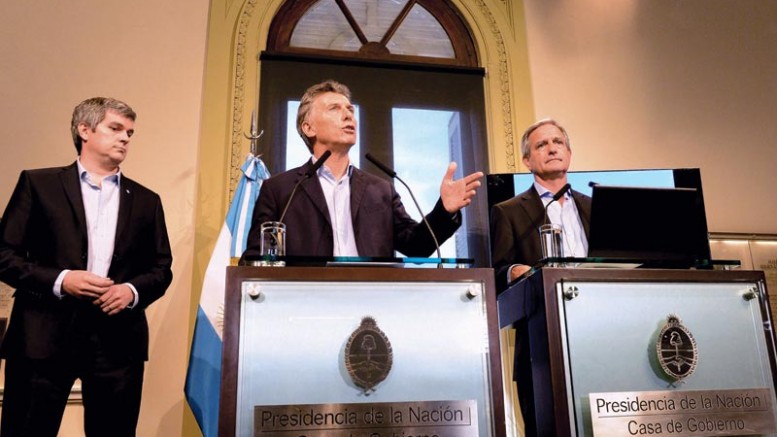
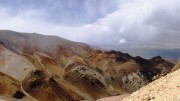
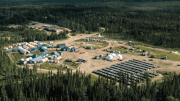
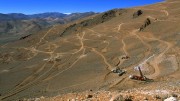
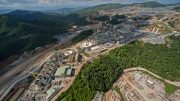
Be the first to comment on "Argentina’s future uncertain ahead of elections"